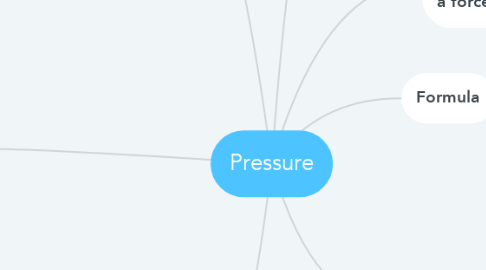
1. Pressure in liquids
1.1. Fluids = a substance that can flow
1.1.1. When an object is immersed in a liquid, the liquid will exert a pressure, squeezing the object.
1.1.2. This pressure is exerted evenly across the whole surface of the liquid, and in all directions.
1.2. The pressure depends on :
1.2.1. The depth of the liquid
1.2.2. The density of the liquid
1.2.3. *The bigger either of these factors, the greater the pressure.
1.3. hydrostatic pressure. The pressure exerted by a fluid at equilibrium at a given point within the fluid, due to the force of gravity.
1.4. pressure in fluids is caused by particle collisions with themselves and the surface of a container
2. Formula[Liquid]
2.1. P= Height x density x gravitational field strength
2.1.1. P= hpg
2.2. P= pascals , Density=kg/m(3/cubed) , depth = m
2.2.1. The density of water is 1,000 kg/m3
2.2.2. gravitational field strength is 10 N/kg/
3. Instruments of measuring pressure :
3.1. A barometer is a device that is used to measure air pressure.
3.1.1. If atmospheric pressure increases, a greater length of mercury can be supported in the tube.
3.1.2. If atmospheric pressure decreases then less mercury will be supported in the tube.
3.2. A manometer is used to measure gas pressures.
3.2.1. One end of the U-tube is open to the atmosphere.
4. Pressure is force per unit area. Pressure determines the effect of a force on a surface
4.1. To increase pressure - increase the force or reduce the area the force acts on.
4.2. To reduce pressure - decrease the force or increase the area the force acts on.
5. Formula
5.1. Pressure = F/A
5.2. P= pascals , F = newtons , A = squaure meters(m2)
6. Atmospheric pressure
6.1. At sea level the atmosphere exerts a pressure upon all surfaces.
6.1.1. This pressure is caused by the weight of the atmosphere pushing against those surfaces.
6.2. as the altitude increases , it lessens because :
6.2.1. the number of air molecules decreases
6.2.2. the weight of the air decreases
6.2.3. there is less air above a surface

